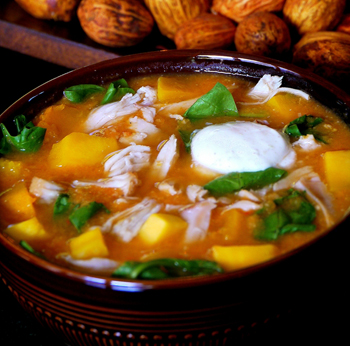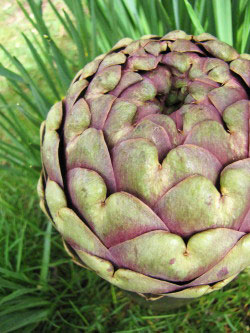 Well, I am embarrassed to admit that I got overwhelmed in Whole Foods the other day. Here I am a Food Professional (whatever that is), and the sheer abundance of goodies in the store was just too much for me. Granted, it was a quick stop—I only had 10 minutes to troll the store, as I was on my way to a book signing at Andover Bookstore in Andover, MA. Since we don’t have a Whole Foods on the Island (nor a grocery store anywhere near the size and breadth of this kind), I try to stop in one of these stores when I’m off-Island, mostly to see what the produce selection is like, but sometimes to pick up a specialty ingredient.
Well, I am embarrassed to admit that I got overwhelmed in Whole Foods the other day. Here I am a Food Professional (whatever that is), and the sheer abundance of goodies in the store was just too much for me. Granted, it was a quick stop—I only had 10 minutes to troll the store, as I was on my way to a book signing at Andover Bookstore in Andover, MA. Since we don’t have a Whole Foods on the Island (nor a grocery store anywhere near the size and breadth of this kind), I try to stop in one of these stores when I’m off-Island, mostly to see what the produce selection is like, but sometimes to pick up a specialty ingredient.
So it’s a little frustrating to be in a store with zillions of different products and not much time to peruse them. But honestly, even if I had hours on my hands, or a store like this nearby for regular shopping, I’d still probably be a bit blinded and a tad frazzled by all the colors and sounds and choices and crowds. It’s just a personal preference for me these days—I like things simpler and quieter, and I don’t mind a few less choices.

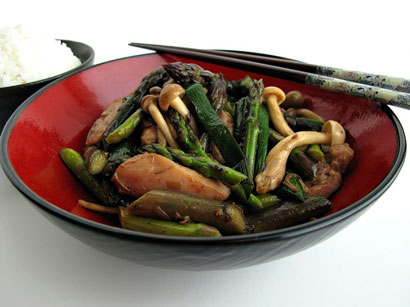 If you've been hoping to brush up on your stir-fry skills, there's no better time to do just that than now. Spring gives you the best opportunity with so many different vegetables to cook with—and they're all amazing in a stir-fry. There are green beans, broccoli, asparagus, and soon there will be peas, but in the meantime green garlic is what you should be looking for in the farmers' market.
If you've been hoping to brush up on your stir-fry skills, there's no better time to do just that than now. Spring gives you the best opportunity with so many different vegetables to cook with—and they're all amazing in a stir-fry. There are green beans, broccoli, asparagus, and soon there will be peas, but in the meantime green garlic is what you should be looking for in the farmers' market.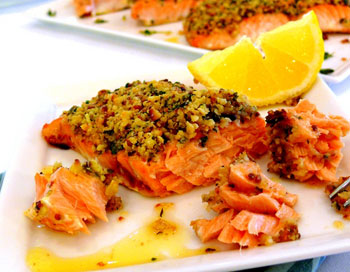 I love salmon. I probably eat entirely too much of it.
I love salmon. I probably eat entirely too much of it.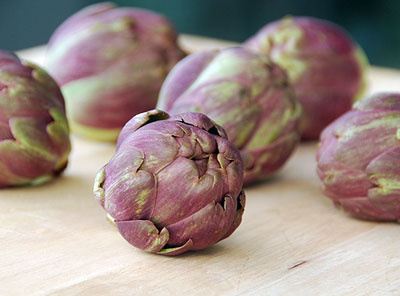 I've always been a big Globe artichoke kind of girl. That was until a couple of years ago when I tried baby artichokes. Now, I have learned to divide my love between them both.
I've always been a big Globe artichoke kind of girl. That was until a couple of years ago when I tried baby artichokes. Now, I have learned to divide my love between them both.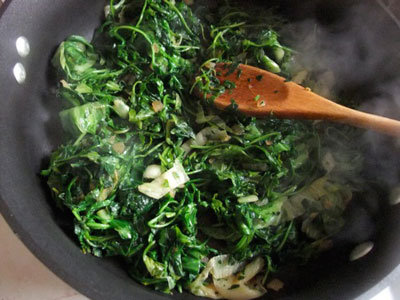 Bags of organic arugula at the store always tempt me. "Buy me!" they say, "Eat salad for a week, it'll be great!" Of course after three or four days the bag is half full and the contents start to look rather wilted and sad. Then comes regret. Why did I buy that bag in the first place? Recently I found the solution to the problem of wilting greens, a problem that I'm guessing may also be yours.
Bags of organic arugula at the store always tempt me. "Buy me!" they say, "Eat salad for a week, it'll be great!" Of course after three or four days the bag is half full and the contents start to look rather wilted and sad. Then comes regret. Why did I buy that bag in the first place? Recently I found the solution to the problem of wilting greens, a problem that I'm guessing may also be yours. 
